No products in the cart.
Great news! The Canada Post strike is over! We’re resuming deliveries to Canada!
Excellente nouvelle ! La grève de Postes Canada est terminée ! Nous reprenons les livraisons vers le Canada !
Great news! The Canada Post strike is over! We’re resuming deliveries to Canada!
Excellente nouvelle ! La grève de Postes Canada est terminée ! Nous reprenons les livraisons vers le Canada !
Bepanthen cream 5% tube 30 g
$25.89
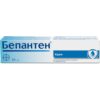

Bepantрen ointment 5% tube 30 g
$24.79
Free Worldwide Shipping
Estimated delivery:
14 - 21 days
Categories: Dermatology
Brand: Bayer
Bepanthen cream is one of those products that help keep the skin healthy. A young mother, a newborn baby, a teenager or a dad who fell asleep on the beach – the product can be useful to each of them, so it is worth putting it in your home first aid kit.
Pharmacological properties
Pharmacodynamics. Dexpanthenol – the active ingredient of the drug Bepanthen ointment, is quickly converted into pantothenic acid in cells and acts as a vitamin. Dexpanthenol is better absorbed than pantothenic acid when applied topically.
Pantothenic acid is a component of the essential coenzyme A (CoA). In this form of acetyl-coenzyme A, coenzyme A plays an important role in the metabolism of every cell. Pantothenic acid is therefore essential for the repair and regeneration of damaged skin and mucous membranes.
Pharmacokinetics. Dexpanthenol is rapidly absorbed by the skin, after which it is immediately converted to pantothenic acid and added to the internal depot of this vitamin.
In the blood, pantothenic acid binds to plasma proteins (mainly albumin and β-globulins). In healthy adults, its concentration is approximately 500-1000 μg/L and 100 μg/L in blood and plasma, respectively.
Pantothenic acid is not metabolized in the body and is excreted unchanged. After oral administration, 60-70% of the dose is excreted in the urine, the rest in the feces. In adults, 2-7 mg of pantothenic acid is excreted in the urine per day, in children – 2-3 mg.
Indication
Bepanthen ointment is used in the following cases:
- to accelerate healing and epithelization of the skin in case of micro-damage (minor burns and scratches), in case of skin irritation (for example, due to radio-, phototherapy or ultraviolet irradiation), in case of chronic skin ulcers and bedsores, anal fissures, cervical erosion and after skin transplantation;
- for the prevention and treatment of cracked or rough and dry skin;
- for regular preventive care of the mammary glands in breastfeeding women and for the treatment of irritation and cracks in the nipples;
- for baby care: prevention and treatment of diaper dermatitis;
- for treating patients’ skin during and after topical application of corticosteroids.
Application
Treatment of superficial wounds of any origin and prevention of cracked, dry or rough skin: apply Bepanthen ointment 1 or more times a day as needed.
Breast care for breastfeeding women: apply ointment to nipples after each breastfeeding.
Treatment of cervical mucosal defects: apply the ointment 1 or more times a day under the supervision of a physician.
Baby care: apply Bepanthen ointment after each diaper change.
Bepanthen ointment, the active ingredient of which is dexpanthenol, has a base containing a large amount of fat. For use on wet wounds, unprotected skin surfaces (face) and skin covered with hair, it is better to use Bepanthen cream, which penetrates the skin quickly.
Contraindication
Hypersensitivity to dexpanthenol or other components of the drug.
Side effects
On the part of the immune system, as well as the skin and subcutaneous tissues: there are reports of allergic reactions and allergic skin reactions: contact dermatitis, allergic dermatitis, itching, erythema, eczema, rash, urticaria, skin irritation and blistering.
Special instructions
When using the drug, contact with eyes should be avoided.
Cetyl alcohol, stearyl alcohol, lanolin may cause local skin reactions (e.g. contact dermatitis).
The use of Bepanthen ointment for healing and treating wounds in the genital area or anus while using latex condoms leads to a decrease in the strength and reliability of condoms due to the presence of an excipient – white soft paraffin.
Pregnancy and breastfeeding. There is no reason to believe that the use of the drug during pregnancy and breastfeeding is accompanied by risk. During pregnancy, the drug should be used as prescribed by a doctor.
When used to treat cracked nipples during breastfeeding, the drug must be washed off before feeding.
Children. The drug is used in children of different age groups, including infants.
The ability to influence the reaction speed when driving vehicles or working with other mechanisms. Does not affect.
Interactions
No cases of interaction with other drugs were observed.
Overdose
The active ingredient of Bepanthen ointment, dexpanthenol, is well tolerated and is therefore considered non-toxic in the literature. Hypervitaminosis has not been described.
Storage conditions
At a temperature not exceeding 25 °C.
Be the first to review “Bepantрen ointment 5% tube 30 g” Cancel reply
You may also like


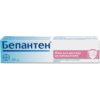
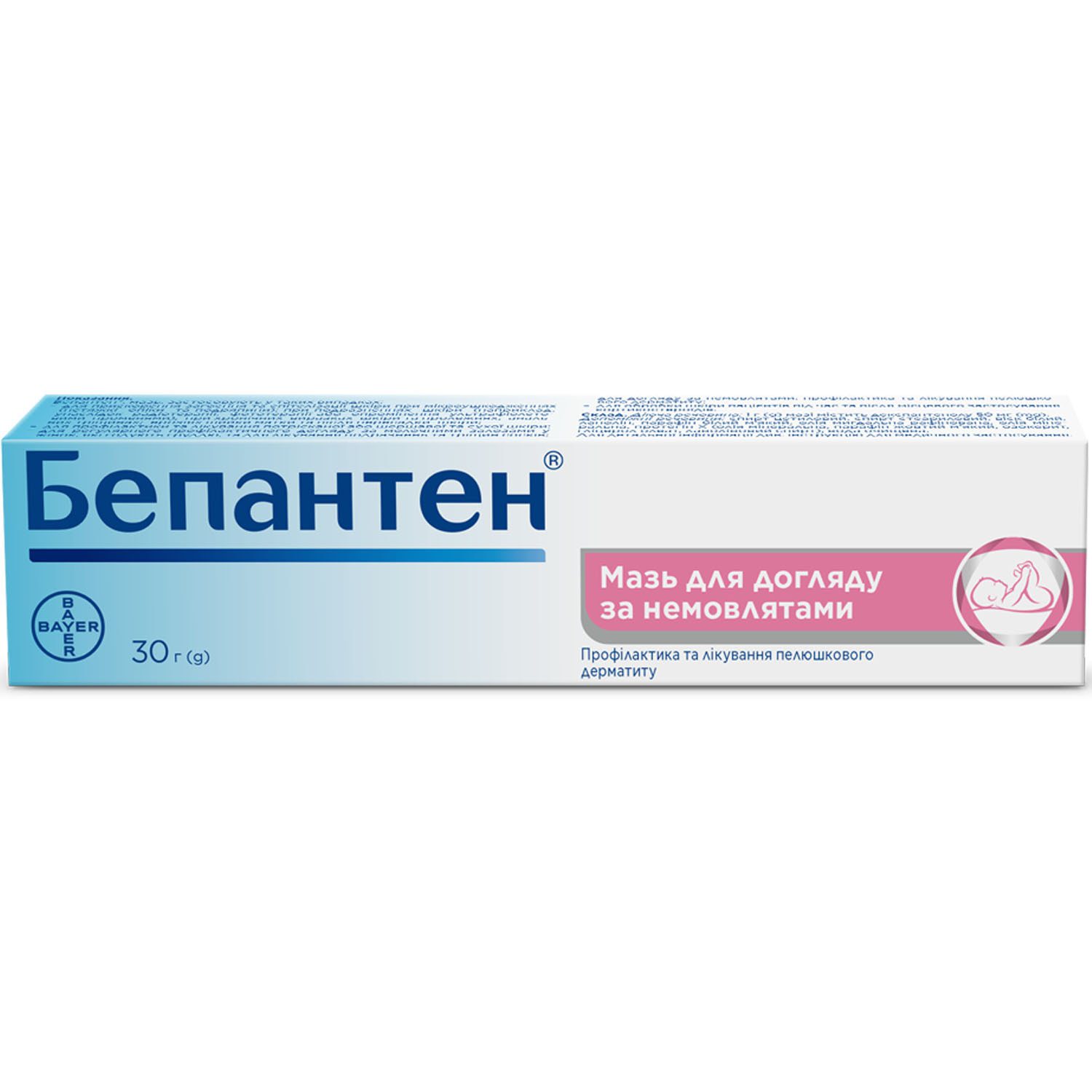
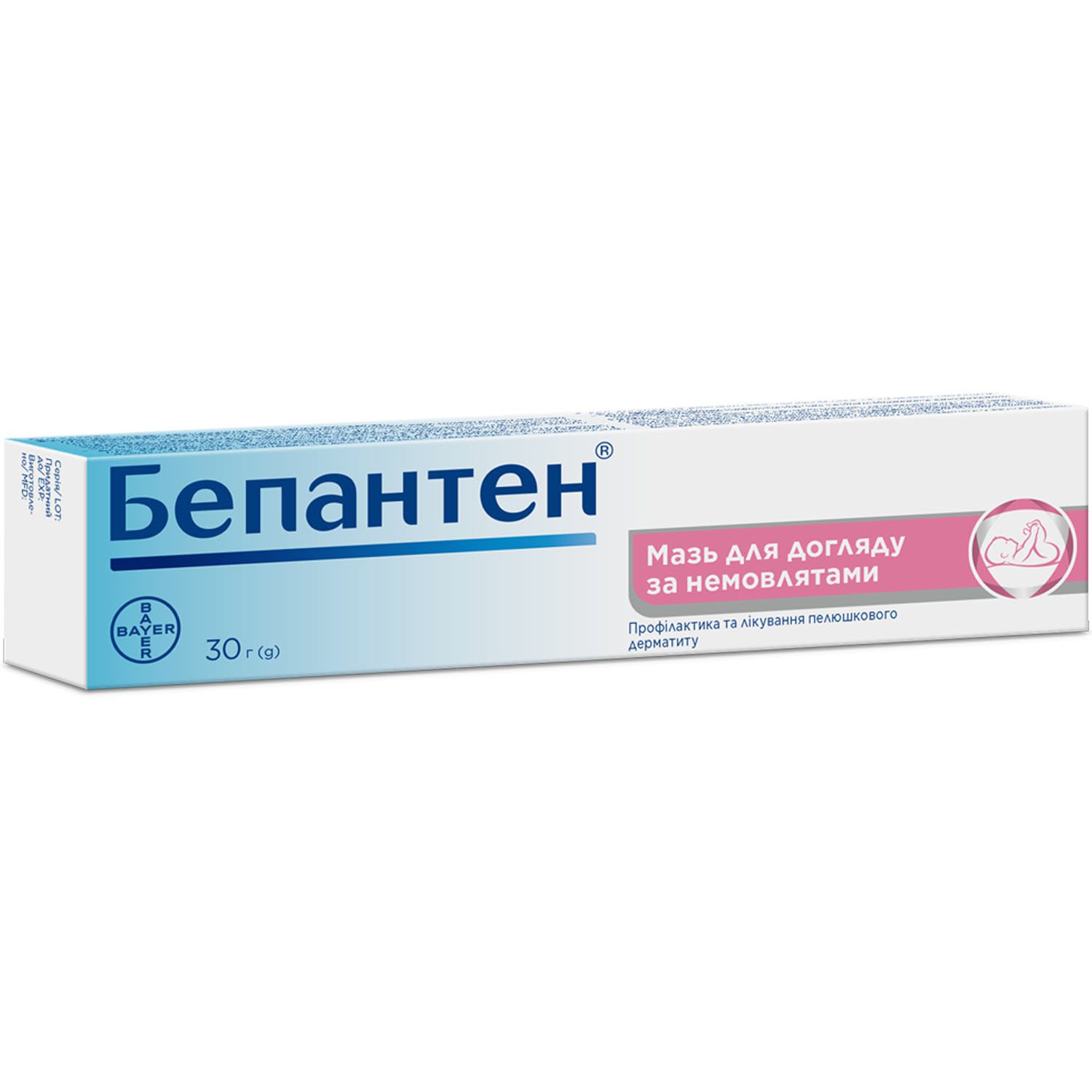
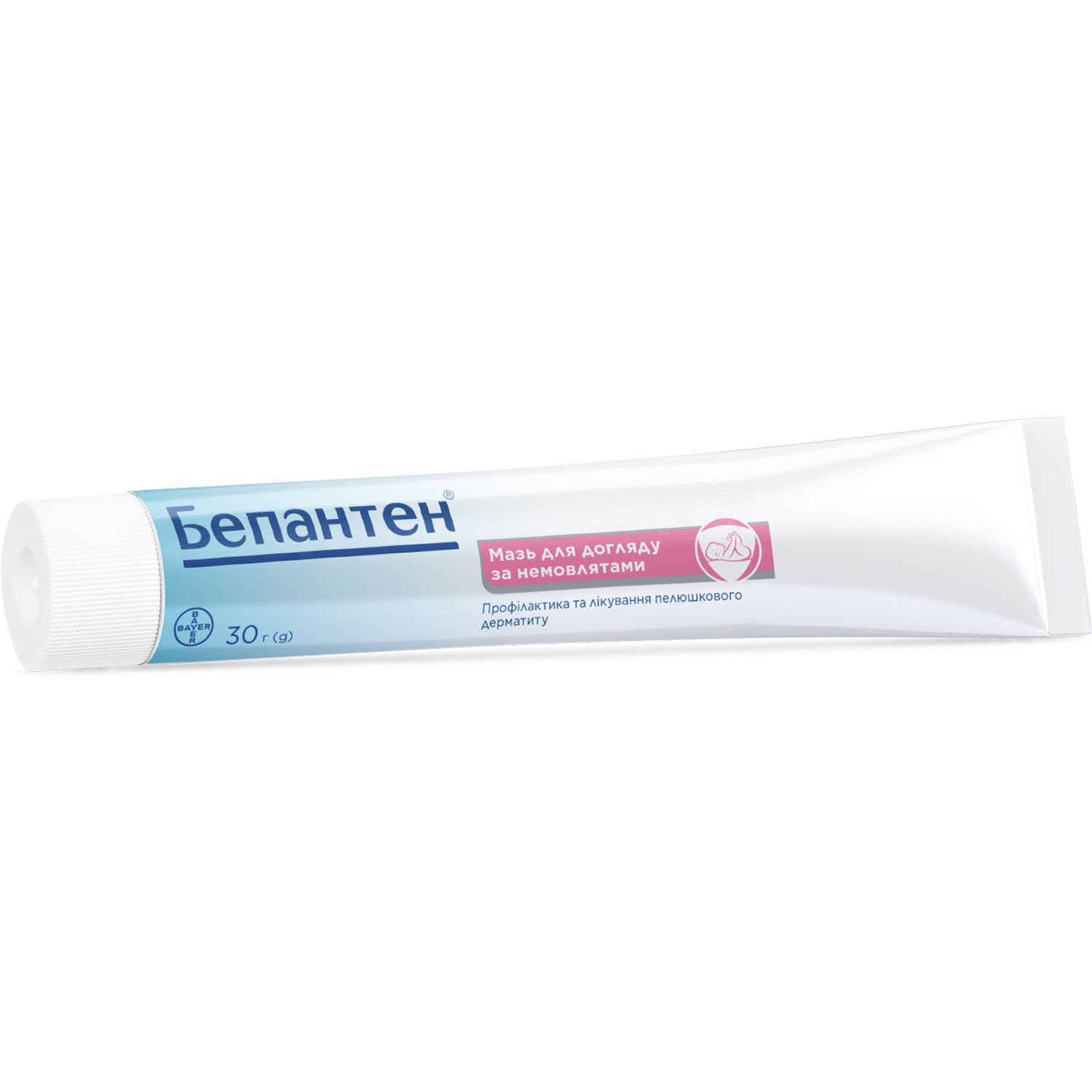
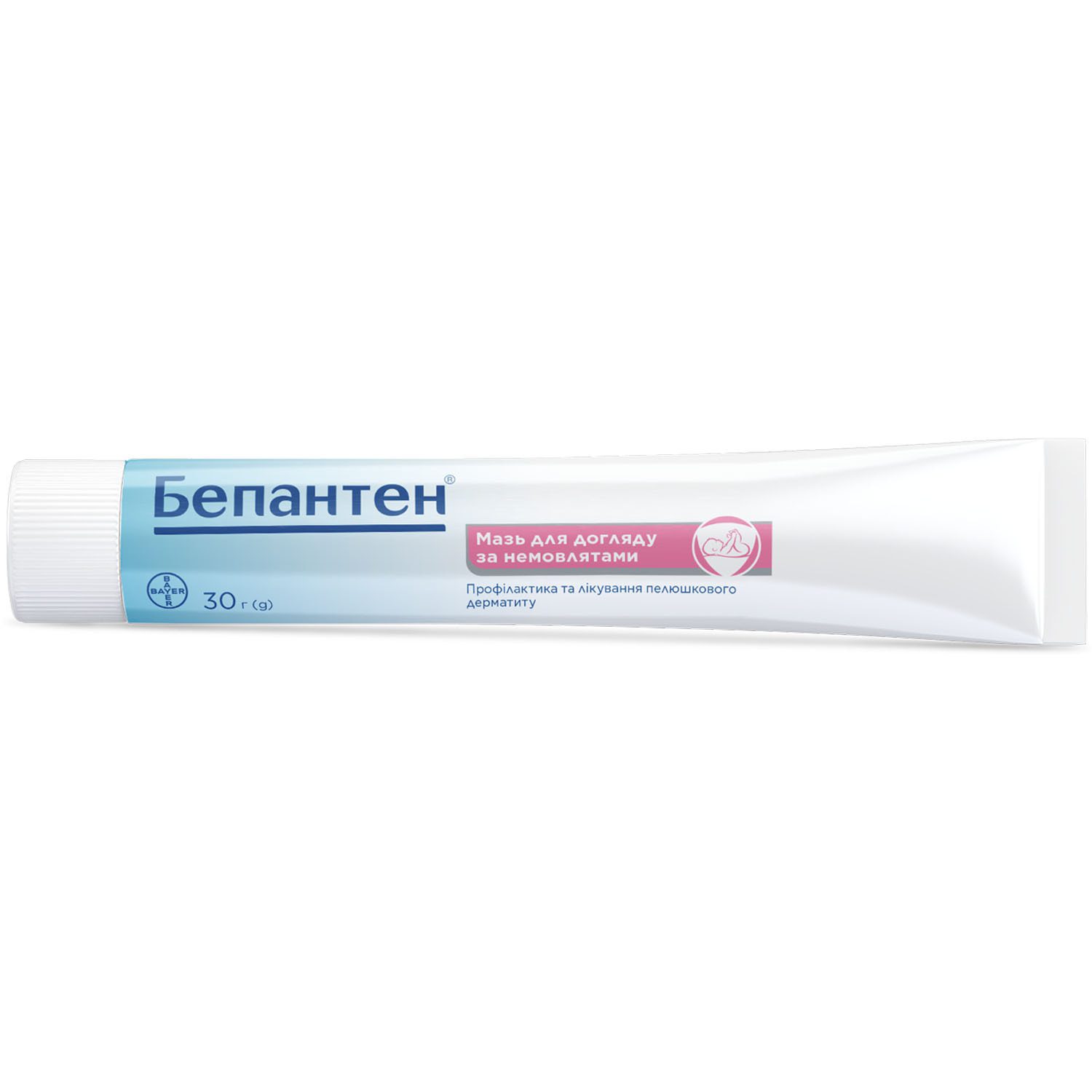
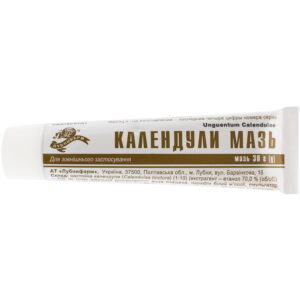
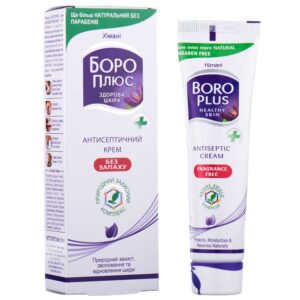

Reviews
There are no reviews yet.